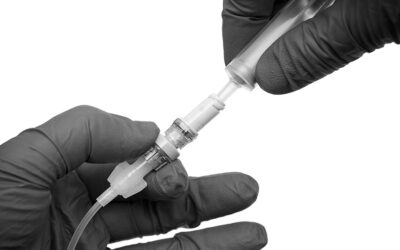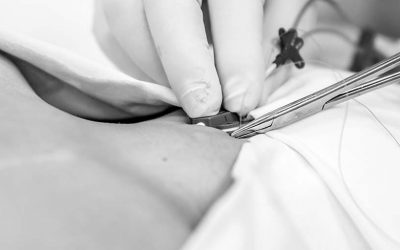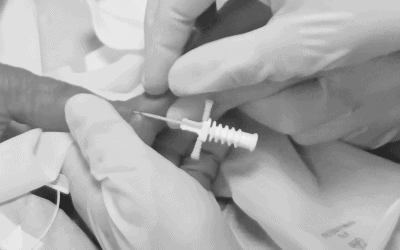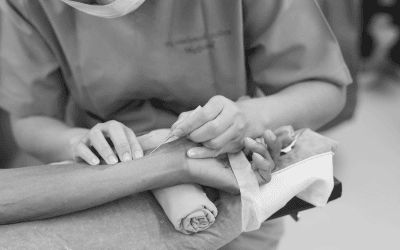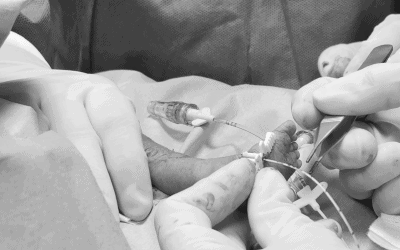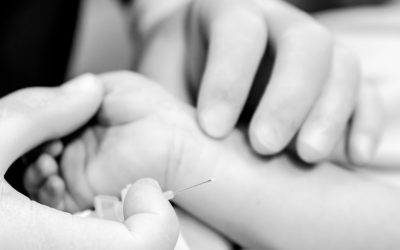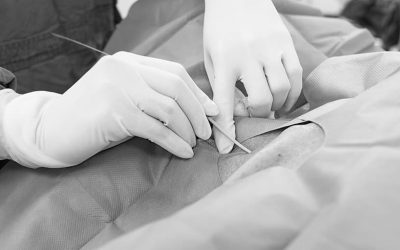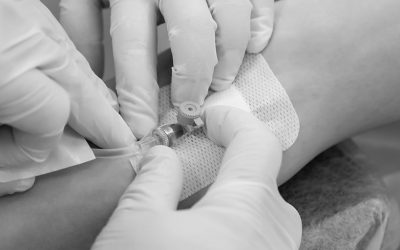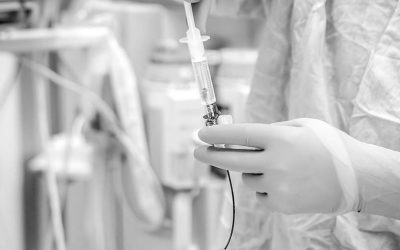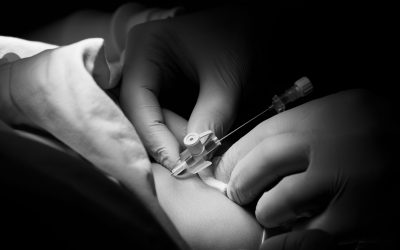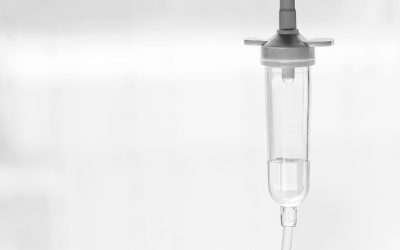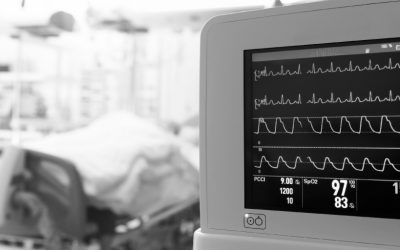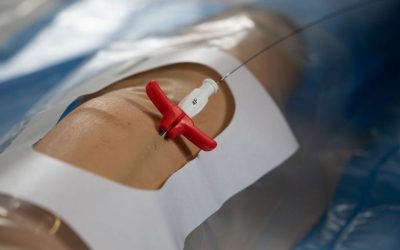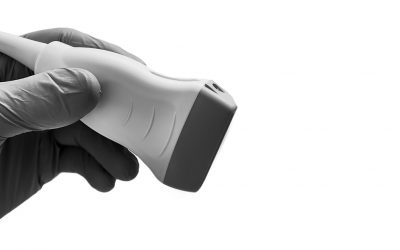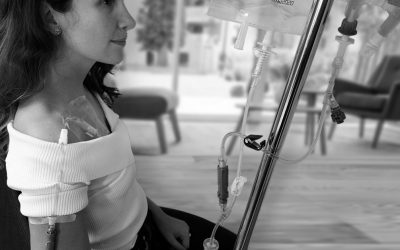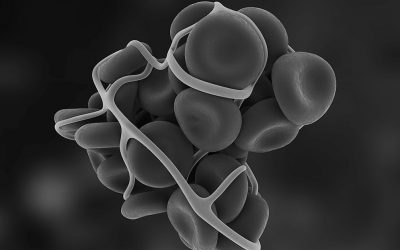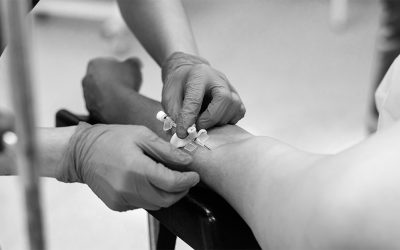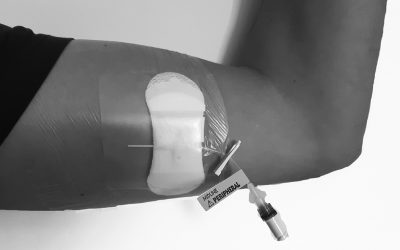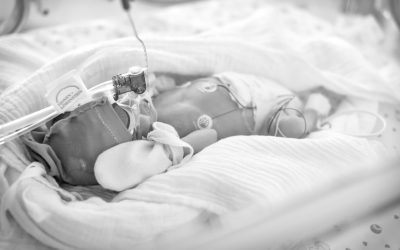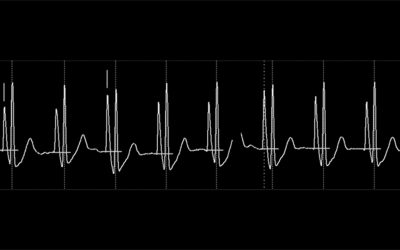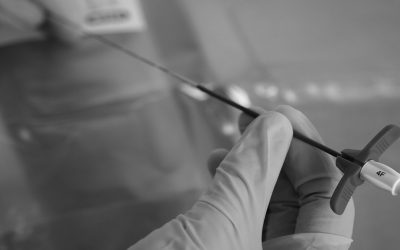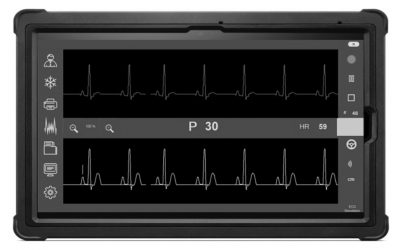This article provides a comprehensive, data-driven comparison between local-regional anaesthesia and general anaesthesia, demonstrating why local-regional anaesthesia is a superior option for the modern, environmentally conscious clinician. Its goal is to highlight...
Cardiovascular innovation in the 21st century: A renewed commitment to life
To mark World Heart Day, we take a look at the most significant innovations in the field of cardiology. From advances in imaging and diagnostic technology to life-saving devices, the heart of medicine is beating stronger than ever. Cardiovascular innovation on World...
Septic shock resuscitation: fluids vs. early vasopressors? 5 practical lessons from CLOVERS and recent evidence
Emergency and critical care teams face a recurring dilemma in early septic shock: How much fluid is enough—and when should we start vasopressors? Prolonged hypotension drives organ injury and mortality, but both fluid overload and delayed vasopressors can...
Fluids, Perfusion, and Lactate: A Unified Approach to Sepsis Resuscitation
Administering the right amount of fluids is crucial in sepsis and septic shock. In critically ill patients, the goal of intravenous fluid therapy is to increase cardiac output to improve both micro- and macro-circulation and tissue oxygen delivery (DO₂). However, in...
Needle-free connectors against occlusion: are they a proven solution?
Catheter occlusion is one of the most common complications associated with central venous access devices (CVADs). Its reported incidence rates range from 3% to as high as 79%1. This complication can significantly impact patient care and can, in some cases, even...
Simulation in Hemodynamic Monitoring and Management
Hemodynamic monitoring and management are fundamental components of perioperative care. Accurate measurement and interpretation of advanced hemodynamic variables can guide clinical decisions and therapeutic interventions, ultimately enhancing patient outcomes. To...
Central venous cannulation in 14 steps
Central venous catheter placement has become a routine procedure due to its numerous indications: it facilitates resuscitation, nutritional support and long-term vascular access. Channeling is usually carried out under ultrasound guidance because of the great...
The Benefits of Cardiac Output Monitoring for ICU Nurses
Nurses are the first clinical aid at the bedside, monitoring and responding to changes in patient conditions. Providing nurses with tools to make more informed decisions can significantly enhance patient care as early detection of preventable outcomes is crucial for...
3 benefits in the use of central venous catheters with rifampicin and miconazole
The proportion of patients who have a central venous catheter inserted has increased over the years, so much so that 78% of patients admitted to intensive care units (ICU) in Europe have a CVC inserted.7 However, central venous catheter (CVC) placement has associated...
Keys to central venous line maintenance
One in ten children with a central venous catheter (CVC) develops a device-associated bloodstream infection. 2 Want to know how to prevent bacteremia and central venous catheter-related infection? Dr. Paco Escribá, anesthesiologist FEA Anesthesiology for children, PhD...
Cost Analysis of the Modified Seldinger Technique (MST) for neonatal PICC Insertion
Neonatal peripherally inserted central catheters (n-PICCs) are commonly used in neonatal intensive care units to administer vasoactive drugs and hyperosmotic solutions such as parenteral nutrition. These catheters are often maintained in place for 2 to 3 weeks and...
Top Infusion Errors in ICU & How to Prevent Them
Infusion is a common practice across various hospital departments that carries risks for both patients and healthcare practitioners. Since infusion is typically carried out progressively over the duration of a patient’s hospitalization, it often becomes...
8 Complications that can occur during arterial cannulation
Arterial cannulation for continuous blood pressure monitoring is not a technique free of complications, most of the time minor and not a major problem for the patient, but in some cases it can have serious consequences. Furthermore, in children, given the smaller...
What are the risk factors for Necrotising enterocolitis (NEC)?
Definition of NEC Necrotising enterocolitis (NEC) is a serious condition that can occur following preterm birth, characterized by bowel inflammation that prevents milk feeding and may require surgery. It is associated with high mortality rates, exceeding 20%. The...
Cardiac Cycle Efficiency: Beyond Measurement, Toward Clinical Interpretation
Advanced hemodynamic monitoring, particularly the ability to track stroke volume (SV) and cardiac output (CO), has significantly contributed to the refinement of anesthesiologists’ expertise in hemodynamic management. Beyond serving as cardiac output monitors, these...
Difficult intubation of neonatal patients
Neonatal tracheal intubation is a frequently performed but high-risk procedure for the baby in delivery rooms (DR) or in neonatal intensive care units (NICU)1. Despite its common use, it remains a complex procedure, particularly when faced with an unexpectedly...
How to Prevent Port Occlusion: 10 Expert-Backed Tips
Occlusion is one of the most common complications associated with vascular access devices (VADs). A blocked device can interrupt treatment, preventing the delivery of essential medications, fluids, or nutrition. This can lead to a rapid deterioration in the emergency...
6 risks associated with fluid overloading and how to avoid them
Fluid therapy is essential in the treatment of critically ill patients. Despite this, inadequate fluid management leads to significant morbidity and mortality. WHAT WILL YOU FIND IN THIS ARTICLE? Fluid overload risksCardiovascular overloadPulmonary oedemaMesenteric...
Enteral nutrition in neonates: choosing a safe and specific system that avoids connection errors
Enteral nutrition is the preferred method for delivering nutrients to patients who are unable to consume them orally. While it is associated with fewer complications compared to other nutritional methods, it is not entirely risk-free. One of the most critical...
The Clinical Relevance of the Modified Seldinger Technique (MST) in Neonatology
Neonatal care often necessitates reliable vascular access for the administration of parenteral nutrition, medications, and other critical therapies. The Modified Seldinger Technique (MST) has emerged as a valuable method for inserting neonatal peripherally inserted...
Ultrasound-guided arterial cannulation in 6 steps
Catheterisation of an arterial line for invasive blood pressure monitoring is a common technique, both in Critical Care Units and in the intra- and postoperative period of patients undergoing cardiac or other major surgery requiring strict blood pressure control or...
What is the ideal length for my central venous catheter?
The incidence of mechanical complications during central venous catheter insertion is 6.2% to 11.8% for subclavian and internal jugular vein approaches, making it a challenge to select the ideal catheter length and avoid risks associated with the technique. 1...
Central venous catheter fixation systems: which is the safest option?
The traditional method of fixing central venous catheters was suturing, and although this is still used today, the high rate of complications is leading more and more professionals to opt for other safer options. What are the alternatives? WHAT WILL YOU FIND IN THIS...
Perioperative hemodynamic management made easy, affordable, and green
Hemodynamic instability frequently manifests during the perioperative course of high-risk surgical patients. This instability arises primarily during surgery due to the influence of anesthetic agents on vascular tone, compounded by surgical bleeding. Post-surgery,...
What tools can be used to avoid resonance in the blood pressure waveform?
In 30.7% of cases, the arterial blood pressure waveform is resonant. If this happens, the reading will be incorrect and, if we base our decisions on it, they will not be the most accurate. WHAT WILL YOU FIND IN THIS ARTICLE? What is resonance? How to avoid resonance?...
What causes respiratory distress syndrome?
Context Patrick Bouvier Kennedy, son of John F. Kennedy; President of the United States, was born on August 7th1963, five weeks before his due date. After his birth he was transferred to one of the best children's hospitals, Boston Children's Hospital, and treated by...
Which introducer to choose for the insertion of neonatal PICCs?
The challenge of achieving correct catheter placement at the first attempt in neonates and premature infants has led healthcare professionals to prioritise minimising the trauma caused during insertion. Choosing the right catheter and introducer is crucial to reducing...
Why CO?
In acute care areas, where patients can be hemodynamically unstable (or at risk of instability), clinicians aim to optimize perfusion in order to avoid organ dysfunction, multi-organ failure, or even death. These areas refer to critical care units, perioperative areas...
6 Keys to proper care and maintenance of the CVC
Central venous catheters are one of the most commonly used devices in hospitals, however, they can present some complications, and to avoid them, proper care and maintenance of the device is essential. WHAT WILL YOU FIND IN THIS ARTICLE? Monitoring of the insertion...
10 Keys to safe internal jugular vein CVC placement in pediatrics
According to studies, the success rate of IJV cannulation in infants can be 100% as long as certain measures are taken and catheter insertion is ultrasound-guided. 1 WHAT CAN YOU FIND IN THIS ARTICLE? Pediatric patients: the challenges of central venous cannulation...
Volume response in septic shock. Case study presented by Dr. Sergi Tormo Ferrándiz
Sepsis is defined as a systemic inflammatory response to infection. This scenario is encountered daily in all healthcare centres with a rate of 10 per 1,000 hospitalised patients. This condition is of great importance as mortality is observed in 20% of sepsis...
Fluid therapy: challenges in the septic patient
The administration of fluids is essential for the survival of the critical patient in shock, regardless of the cause of the shock. This supply occurs to a greater extent during the first hours and days of stay, since it is during these that resuscitation of the...
5 key parameters to understand the hemodynamic response of a septic patient
The first definition of sepsis was made in 1980 and was based on the concept of Systemic Inflammatory Response (SIRS). Despite advances and new definitions over the years, it was then that the basis for the management of the septic patient was established. Sepsis is...
Seldinger technique: when to use the classical or modified method
The evolution of the Seldinger technique since its development in the 1950s has allowed this method to be used with other types of vascular access devices and in fields outside of interventional radiology. In fact, initially known for the insertion of arterial and...
Ensuring optimal care for DIVA patients
The VAD (vascular access device) insertion experience varies between patients. For individuals with difficult intravenous access (DIVA), the process can become traumatic and notably painful. According to Blanco (2019), DIVA affects up to one-third of critically ill...
5 midline complications to know
The administration of drugs can give rise to problems such as phlebitis and extravasation among others, which can force us to use various peripheral routes. Over time, different devices have emerged, including midlines. Scientific evidence shows us that this class of...
Everything you need to know about tunnelling in midlines
In ultrasound-guided procedures, it is possible that an ideal vein isn't found in the optimal catheter exit zone. When confronted with the decision between "immediate placement of a line out of necessity for the patient" and "waiting for potential alternatives,"...
Ultrasound in the placement of PICCs and midlines
As the GAVeCeLT group (1) stated in their manual on PICCs and midlines regarding the evolution of PICC use, the introduction of ultrasound in the 2000s has been a breakthrough in the field. In this article, we delve into the utility of ultrasound in the field of...
Facilitating cannulation in neonates: Microseldinger technique
Neonatal patients admitted to Intensive Care Units are subjected to continuous manipulations and invasive procedures. One of the main objectives of nursing care is to minimize the practice of aggressive techniques in order to improve care and prevent complications....
Combining aesthetics and feasibility in chest port placement
Recommendations of Dr Diane Weber Two years ago, I met Alicia, a breast cancer patient. After struggling with the disease for a while, she had to undergo a mastectomy. Soon after her surgery, a need for a chest port was identified. She came to me asking for an...
What care should be given to the newborn during the Golden Minute?
At birth, neonates initiate physiological processes that facilitate their adaptation from the intrauterine environment to the extrauterine environment. This adaptation is sometimes complex due to the innumerable responses - chemical, neurological, sensory, thermal and...
3 keys to choosing the best hemodynamic monitor for our patients
Hemodynamic monitoring provides us with information on cardiovascular performance and has therefore become a fundamental tool in the diagnostic approach and therapeutic orientation. More and more devices are becoming available that allow us to carry out advanced...
CSSAS: Closed Safety Systems for Administration to Reduce Risks of Occupational Exposure to HMPs
Healthcare professionals handling chemotherapy for preparation and administration of HMPs are likely to be exposed to potential contamination risks associated with cytotoxic drugs. These risks can lead to health implications, ranging from minor issues like headaches,...
Enteral nutrition in the newborn: analysis of scientific evidence on feeding methods
The following article offers an in-depth analysis of the scientific evidence on enteral nutrition in infants, focusing in particular on the methods of administration. Nutrition in infants is a vital component for their development and well-being, and the choice of the...
Enteral nutrition in infants: the problem of accidental connections
For the treatment of patients, from adults to infants and premature babies, admitted to health care facilities, it is often necessary to place probes and catheters, the use of which involves the administration of enteral nutrition in addition to the infusion of drugs...
Enteral nutrition in infants: small connections for small patients
For the treatment of patients, from adults to infants and premature babies, admitted to healthcare facilities, it is often necessary to place probes and catheters whose use includes the administration of enteral nutrition in addition to the infusion of drugs and other...
Efficacy and importance of connector cleaning in neonatal enteral nutrition
Enteral nutrition tubes are used in healthcare facilities to administer nutrition, fluids and medication to patients who cannot be fed orally. For years, these patients have been subjected to the risks of misconnections, defined as incorrect administration of an...
5 things to know about thrombosis in PICCs
In this article, we will address thrombosis in peripherally inserted central catheters (PICCs) based on the following aspects: incidence, causes, physiology, symptomatology, and prevention. What is thrombosis? Thrombosis is the formation of a clot in a vessel. It can...
Catheter to vein ratio: What are the recommendations?
With the introduction of venous mapping methods prior to the placement of a central venous catheter (RaPeVA, RaCeVA, and RaFeVA), the evolution of ultrasound techniques has given a fundamental role to the choice of vein. In fact, the measurement of this vein (obtained...
The PICC-port revolution
The PICC-port is the latest breakthrough in Venous Access Devices (VADs) and is now included in the DavExpert app's solution for patients. New studies are showing it is a safe, effective, efficient and goodlooking option for cancer patients. How has this device...
Recommendations for the management of difficult airways during COVID-19
As some of the commonly recommended strategies for managing difficult airways are not optimal in the context of COVID-19, the Society for Airway Management (SAM) decided to take action. To this end, it has set up a task force to review existing literature and current...
Enteral nutrition delivery systems: which one to choose in neonates?
Nutritional needs are understood as the amount of each of the nutrients required by an individual at each stage of life to maintain a correct nutritional status and, thus, prevent disease and ensure proper growth. Ensuring that these nutritional needs are met in the...
Midline catheter: placement and maintenance protocol
The midline catheter growth has been exponential since it is a resource that allows a notable improvement in the management of vascular access for medium-term treatments compatible with peripheral perfusion. Midline catheters must be placed by trained and specialised...
What are the advantages of PICC-port?
PICC-port is an implanted catheter that is undoubtedly gaining ground in the world of vascular access. Its growing success is not surprising: it comes with new indications, cost reduction and patient satisfaction. Even if PICC-port has been in use for several decades,...
The importance of surfactant in the neonatal patient
Pulmonary surfactants along with other therapeutic measures are the treatment of choice for various respiratory conditions. A surfactant deficiency in preterm infants leads to respiratory distress syndrome characterized by poor lung expansion, inadequate gas exchange...
Is the use of cleaning protocols sufficient to increase the safety of ENFit® connectors in neonates?
The introduction of ENFit® connectors in neonatology units, with the aim of avoiding connection errors between systems intended for different clinical therapies, has generated much debate among experts in the field. The new connector for enteral nutrition poses a...
Hypothermia in newborns, how to prevent it?
Approximately 94 million infants are born each year worldwide. All of these infants are vulnerable to cold stress and thus hypothermia, regardless of their gestational age or weight. It is important to provide them with an adequate and stable environment because of...
Which intubation guide to choose for which patient?
Intubation is one of the most common practices for an anaesthetist. However, when this technique is performed, the patient's airways are often not as accessible as we would like. This is why an intubation guide is very often necessary to facilitate intubation into the...
How to locate the tip of a PICC
The reference guidelines on vascular access leave no doubt: it is essential to position and correctly locate the tip of a PICC. Otherwise, healthcare professionals risk encountering complications that can jeopardize the ongoing treatment and even the patient's health....
ZIM method and tunnelling in PICC placement
In Intravenous Therapy Teams, PICC placement using standard MST (Modified Seldinger Technique) is common practice and generally well controlled. However, complications can arise if the standard technique is applied, and the insertion site is unsuitable. Failure to...
6 measures to ensure the proper functioning of a PICC-port
Healthcare professionals working with oncology patients are used to handling fully implanted catheters. In recent years, PICC-port has proven to be very useful in the field. However, any vascular access device can become a problem if its placement has not been optimal...
5 key advantages of midlines you should know of
Short Peripheral Intravenous Catheters (SPIVCs) are commonly used as default vascular access devices by practicians around the world for short and midterm therapies. However, they can be a problem in case of medium therapies as that would entail the insertion of...
PICC placement in patients with Atrial Fibrillation
According to the studies by Dr Pittiruti and Dr LaGreca Since the late 1980s, Dr Pittiruti and Dr LaGreca of the Fondazione Policlinico Universitario Agostino Gemelli in Rome have been researching the possibility of using ECG to locate the tip of a PICC. In 1989 (1),...





